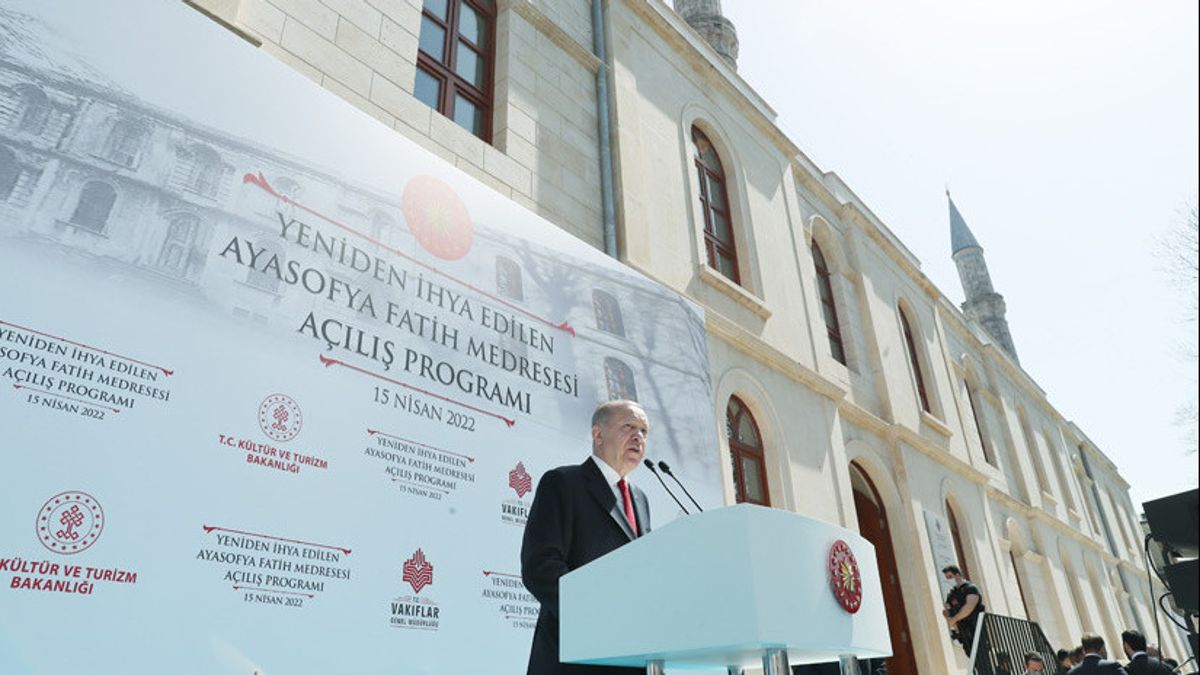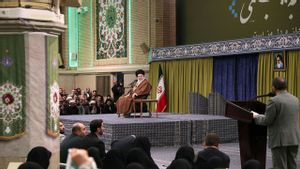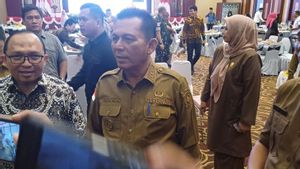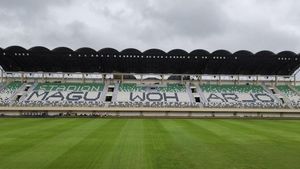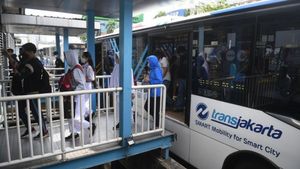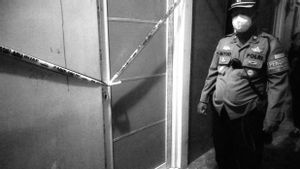JAKARTA - Turkish President Recep Tayyip Erdogan inaugurated the recently rebuilt Fatih Hagia Sophia Madrasah based on the initial concept, and opened last Friday.
It was the first madrasa in the former capital of the Ottoman Empire. Its name is taken from Fatih (Conqueror), the title given to Sultan Mehmed II, who conquered the city in 1453.
It was the sultan who turned the building that was previously used as the residence of the priests at the Hagia Sophia church into a madrasa, after the church was converted into a mosque.
The new facility, characterized by Ottoman architecture, will serve as home to many centers of education and research. Fatih Sultan Mehmet Vakıf University, founded in 2010 by a foundation founded by Ottoman sultans centuries ago, will run the two-story madrasa.
The Directorate General of Foundations, Ministry of Culture and Tourism had started the reconstruction work of the madrasa in 2017, three years before Turkey took the important step and restored the status of Hagia Sophia from a museum to a mosque, renaming it the Great Mosque of Sophia.
Located northwest of the mosque and amongst the Ottoman and Byzantine treasures of the city that adorn Sultanahmet Square, this madrasa has stood the test of time through the centuries.
In the 19th century, Sultan Abdülaziz ordered its demolition because the madrasa was damaged and a new one rebuilt, a little further from the Great Mosque of Hagia Sophia.

Until 1924, the building served as a madrasa. In that year, the Istanbul City government turned it into an orphanage. Two years after the Hagia Sophia was turned into a museum in 1934, the former madrasa was demolished.
The local conservation agency approved a 2012 government project for madrasa restitution and reconstruction and in 2017, the project was officially launched.
The new madrasa only shares the same foundation walls as the old building and is a new addition to Sultanahmet Square where centuries-old buildings from the Blue Mosque to Roman-era obelisks are located.
This two-story building has 38 spacious rooms that will serve as part of the Hagia Sophia Study Center, Mehmed The Conqueror and His Era Research Center, Center for Islamic Art Applications and Research, Islamic Law Research Center, Application and Research Center for Manuscripts, Foundation Research Center , Study Center (famous Ottoman era explorer) Evliya elebi and Center for Applications and Research of Visual Communication and Design.
During the Ottoman period, the madrasa housed the most prominent figures of the Ottoman period. Molla Hüsrev, one of the greatest legal scholars of Sultan Mehmed's time, was the first professor of the madrasa. Ala al-Din Ali bin Muhammad, also known as Ali Qushji, also served in the building as one of the leading astronomers and mathematicians of the Islamic world in the 15th century.

The new building is a combination of wood and metal architecture with wooden beams combined with iron supports and the facade is made of stone covering.
Built on 1,473 square meters (15,855 square feet), the house has three courtyards, with a wooden walkway in each courtyard supported by metal reinforcement. The remains of the old madrasa, including part of a reservoir, are well preserved.
Speaking at the inauguration ceremony, President Recep Tayyip Erdoğan said they were pleased to "restore the city another important structure whose traces were deliberately erased."
"They demolished this place under the pretext of blocking the view. This historical site was secretly destroyed," said President Erdogan, according to the Daily Sabah on April 15.
President Erdogan acknowledged Turkey had failed to preserve its ancestral heritage at one point, blaming a "one-party mindset." He was referring to the period in the early years of the Turkish Republic which was ruled by the Republican People's Party (CHP), Erdogan's main rival.
"Ancient buildings were demolished or collapsed by themselves due to negligence. Hundreds of mosques were sold or turned into museums or horse stables," he said.
The English, Chinese, Japanese, Arabic, and French versions are automatically generated by the AI. So there may still be inaccuracies in translating, please always see Indonesian as our main language. (system supported by DigitalSiber.id)
